- Joined
- Oct 9, 2007
- Messages
- 47,242 (7.55/day)
- Location
- Hyderabad, India
| System Name | RBMK-1000 |
|---|---|
| Processor | AMD Ryzen 7 5700G |
| Motherboard | ASUS ROG Strix B450-E Gaming |
| Cooling | DeepCool Gammax L240 V2 |
| Memory | 2x 8GB G.Skill Sniper X |
| Video Card(s) | Palit GeForce RTX 2080 SUPER GameRock |
| Storage | Western Digital Black NVMe 512GB |
| Display(s) | BenQ 1440p 60 Hz 27-inch |
| Case | Corsair Carbide 100R |
| Audio Device(s) | ASUS SupremeFX S1220A |
| Power Supply | Cooler Master MWE Gold 650W |
| Mouse | ASUS ROG Strix Impact |
| Keyboard | Gamdias Hermes E2 |
| Software | Windows 11 Pro |
NVIDIA late Sunday announced the GeForce RTX 2060 graphics card at $349. With performance rivaling the GTX 1070 Ti and RX Vega 56 on paper, and in some cases even the GTX 1080 and RX Vega 64, the RTX 2060 in its top-spec trim with 6 GB of GDDR6 memory, could go on to be NVIDIA's best-selling product from its "Turing" RTX 20-series. At the CES 2019 booth of NVIDIA, we went hands-on with a few of these cards, beginning NVIDIA's de-facto reference-design Founders Edition. This card indeed feels smaller and lighter than the RTX 2070 Founders Edition.
The Founders Edition still doesn't compromise on looks or build quality, and is bound to look slick in your case, provided you manage to find one in retail. The RTX 2060 launch will be dominated by NVIDIA's add-in card partners, who will dish out dozens of custom-design products. Although NVIDIA didn't announce them, there are still rumors of other variants of the RTX 2060 with lesser memory amounts, and GDDR5 memory. You get the full complement of display connectivity, including VirtualLink.




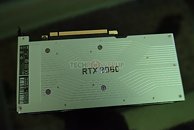
MSI showed off its RTX 2060 Ventus, an elegantly designed card that's positioned lower down its product-stack that's otherwise led by premium Gaming-Z series products. The Ventus borrows many design cues from the Founders Edition, and is perfect for RGB heathens who just need something to game with. Also lying around was an ASUS ROG Strix RTX 2060 O8G. This card is huge, and closely resembles the company's RTX 2070-based ROG Strix cards. A large dual fin-stack cooling solution lets ASUS dial up clock-speeds, while you get some ROG Strix exclusives, such as case fan headers.
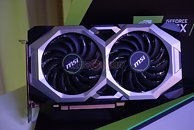
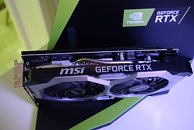
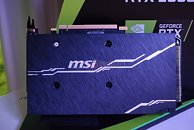



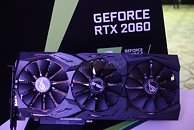
EVGA went ahead and designed a triple-slot card based on the RTX 2060. This isn't an oversized card designed to compensate for its mid-range GPU; but rather a densely packed aluminium fin-stack cooler ventilated by a single fan, and is built along the same philosophy as the Ultra Silent series from the previous generation. ZOTAC and Inno3D each have compact board designs that have been built to a cost, and are expected to sell the most, due to aggressive pricing. These cards are guaranteed to fit in most cases, owing to a ~20 cm board length, nearly-standard height, and yet a dual-fan cooling solution.




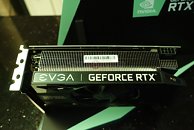

Palit and Gainward each have a well-balanced board design that's neither too compact like ZOTAC, nor too beefy like the ASUS Strix. Both cards feature a dual-fan cooler, with an aluminium fin-stack heatsink, factory-overclock, and a ~23 cm board length. All these cards will debut on the 15th of January, however, NVIDIA's partners are expected to launch dozens more SKUs running up to Spring-Summer.







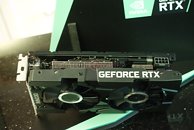



View at TechPowerUp Main Site
The Founders Edition still doesn't compromise on looks or build quality, and is bound to look slick in your case, provided you manage to find one in retail. The RTX 2060 launch will be dominated by NVIDIA's add-in card partners, who will dish out dozens of custom-design products. Although NVIDIA didn't announce them, there are still rumors of other variants of the RTX 2060 with lesser memory amounts, and GDDR5 memory. You get the full complement of display connectivity, including VirtualLink.





MSI showed off its RTX 2060 Ventus, an elegantly designed card that's positioned lower down its product-stack that's otherwise led by premium Gaming-Z series products. The Ventus borrows many design cues from the Founders Edition, and is perfect for RGB heathens who just need something to game with. Also lying around was an ASUS ROG Strix RTX 2060 O8G. This card is huge, and closely resembles the company's RTX 2070-based ROG Strix cards. A large dual fin-stack cooling solution lets ASUS dial up clock-speeds, while you get some ROG Strix exclusives, such as case fan headers.







EVGA went ahead and designed a triple-slot card based on the RTX 2060. This isn't an oversized card designed to compensate for its mid-range GPU; but rather a densely packed aluminium fin-stack cooler ventilated by a single fan, and is built along the same philosophy as the Ultra Silent series from the previous generation. ZOTAC and Inno3D each have compact board designs that have been built to a cost, and are expected to sell the most, due to aggressive pricing. These cards are guaranteed to fit in most cases, owing to a ~20 cm board length, nearly-standard height, and yet a dual-fan cooling solution.






Palit and Gainward each have a well-balanced board design that's neither too compact like ZOTAC, nor too beefy like the ASUS Strix. Both cards feature a dual-fan cooler, with an aluminium fin-stack heatsink, factory-overclock, and a ~23 cm board length. All these cards will debut on the 15th of January, however, NVIDIA's partners are expected to launch dozens more SKUs running up to Spring-Summer.











View at TechPowerUp Main Site








